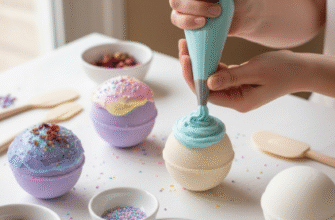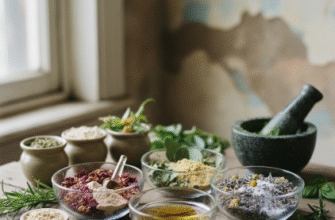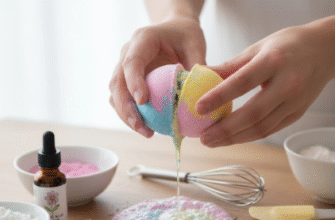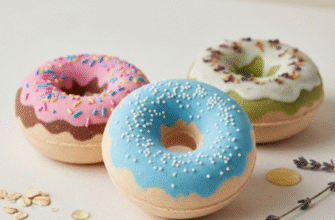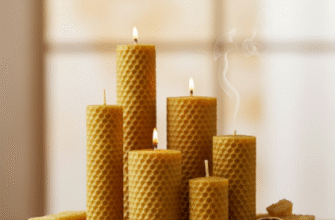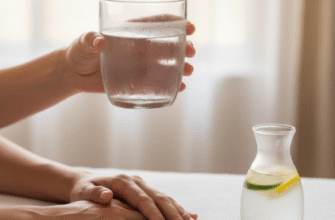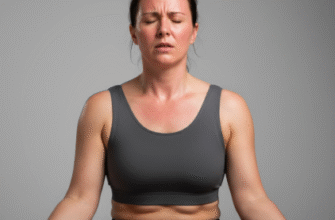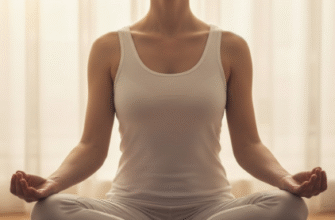Taking care of the delicate skin around our eyes doesn’t always require expensive, store-bought potions. Sometimes, the simplest ingredients, combined with a little bit of care in your own kitchen, can offer gentle and satisfying nourishment. Creating your own eye cream puts you in control, letting you choose exactly what goes onto your skin, ensuring freshness and avoiding unnecessary additives that might cause irritation. It’s a wonderfully grounding process, connecting you to the ingredients and the simple act of self-care.
Why consider whipping up your own batch? For starters, you know precisely what’s inside. Commercial products often contain long lists of chemicals, preservatives, and fragrances that can be harsh on the sensitive eye area. Making it yourself means you can focus on pure, simple moisturizers and emollients. Plus, it’s often much more budget-friendly in the long run, and you can tailor the richness or lightness to what feels best for your skin throughout the seasons.
Gentle Ingredients for Your Homemade Creations
The key to a successful DIY eye cream lies in choosing the right ingredients – ones known for their gentle, moisturizing properties. You don’t need anything too complicated. Look for natural butters, oils, and gels that are generally well-tolerated.
Nourishing Butters:
Shea Butter: This is a fantastic base for many DIY creams. It’s incredibly rich in fatty acids and vitamins, offering deep moisturization without typically feeling greasy once absorbed. Look for unrefined, raw shea butter for the most natural option.
Cocoa Butter: Known for its lovely, subtle chocolate scent, cocoa butter is another excellent emollient. It forms a protective barrier on the skin, helping to lock in moisture. It’s quite firm at room temperature, so it often needs to be melted and combined with softer oils.
Beneficial Oils:
Sweet Almond Oil: A light, easily absorbed oil that’s rich in Vitamin E. It’s known for its softening properties and is generally considered gentle enough for most skin types.
Jojoba Oil: Technically a wax ester, jojoba oil’s composition is remarkably similar to our skin’s natural sebum. This means it’s often well-tolerated, absorbs beautifully, and helps to balance moisture levels without clogging pores.
Rosehip Seed Oil: Prized for its fatty acid content and naturally occurring vitamins (like Vitamin A precursors and Vitamin C, though amounts vary). It’s considered a ‘dry’ oil, meaning it absorbs quickly. It’s often used for its conditioning properties. Always choose cold-pressed, unrefined versions for maximum benefit.
Vitamin E Oil (Tocopherol): Not typically used as a base oil, but a few drops can be added to your recipes. Vitamin E is a potent antioxidant and also helps to naturally extend the shelf life of your homemade oil-based products slightly. Ensure you’re using Vitamin E oil meant for skin application, not supplements.
Soothing Additions:
Aloe Vera Gel: Pure aloe vera gel (ensure it doesn’t contain alcohol or unnecessary additives) offers light hydration and a wonderful cooling, soothing sensation. Because it’s water-based, it won’t mix perfectly with pure oils/butters unless an emulsifier is used, but it can be the star in lighter, gel-like recipes or used separately.
Simple Tools You’ll Need
You don’t need a fancy lab setup. Most items are likely already in your kitchen:
- Small, clean glass jars with airtight lids (dark glass is ideal for preserving ingredients).
- A double boiler (or a heatproof bowl set over a saucepan with simmering water).
- A small spatula or spoon for mixing.
- Measuring spoons.
DIY Eye Cream Recipes to Try
Here are a few simple recipes focusing on gentle nourishment. Remember to always start with clean hands and utensils.
Recipe 1: Simple Shea & Almond Nourisher
This is a great starting point – rich, creamy, and deeply moisturizing. Ideal for nighttime use or drier skin types.
Ingredients:
- 1 tablespoon Shea Butter (unrefined)
- 1 teaspoon Sweet Almond Oil
- Optional: 2-3 drops Vitamin E Oil
Instructions:
- Gently melt the shea butter using a double boiler or a heatproof bowl over simmering water. Heat just until melted, avoiding high temperatures.
- Remove from heat and let it cool slightly, but not solidify.
- Stir in the sweet almond oil and the optional Vitamin E oil.
- Mix thoroughly until well combined.
- Pour the mixture into your clean, small glass jar.
- Let it cool completely at room temperature or in the refrigerator until solidified. It will firm up as it cools.
Recipe 2: Cooling Aloe & Jojoba Refresher
This recipe is lighter and focuses on soothing hydration, making it pleasant for daytime use or for those who prefer a less heavy feel.
Ingredients:
- 2 tablespoons Pure Aloe Vera Gel
- 1 teaspoon Jojoba Oil
- Optional: 1/4 teaspoon Vegetable Glycerin (for extra hydration)
Instructions:
- In a small bowl, combine the aloe vera gel and jojoba oil.
- If using, add the vegetable glycerin.
- Whisk the ingredients together vigorously. Note: The oil and aloe won’t fully emulsify without an emulsifying agent, so you might see tiny droplets. This is normal. You’ll need to give it a quick stir before each use.
- Transfer the mixture to a clean jar. Store this one in the refrigerator for an extra cooling effect and to help preserve the aloe vera gel longer. Use within 1-2 weeks due to the high water content.
Recipe 3: Rich Cocoa & Rosehip Blend
A more decadent blend, combining the protective qualities of cocoa butter with the conditioning benefits of rosehip oil.
Ingredients:
- 1 teaspoon Cocoa Butter
- 1 teaspoon Shea Butter
- 1 teaspoon Rosehip Seed Oil
- 1/2 teaspoon Jojoba Oil
- Optional: 2 drops Vitamin E Oil
Instructions:
- Gently melt the cocoa butter and shea butter together in your double boiler setup.
- Once melted, remove from the heat and allow to cool slightly.
- Stir in the rosehip seed oil, jojoba oil, and optional Vitamin E oil.
- Mix well until everything is incorporated.
- Pour into your clean jar and let it cool and solidify completely. This blend will be quite rich.
How to Apply Your DIY Eye Cream
Gentleness is paramount when applying anything around the eyes. The skin here is thinner and more delicate than elsewhere on your face.
- Use your ring finger, as it naturally applies the least pressure.
- Take a tiny amount of cream – a little goes a long way. Think half a pea size or less for both eyes.
- Gently pat (don’t rub or pull) the cream onto the skin around the orbital bone, moving from the outer corner inwards under the eye, and then gently patting onto the area just below the eyebrow. Avoid getting too close to the lash line or directly into the eye.
- Allow it to absorb naturally.
Storing Your Homemade Treasures
Since these DIY recipes don’t contain the strong preservatives found in commercial products, their shelf life is shorter. Proper storage is crucial:
- Keep creams in airtight containers, preferably dark glass, to protect them from air and light exposure.
- Store in a cool, dark place like a cabinet or drawer. Avoid sunny windowsills or steamy bathrooms.
- Oil/butter-based creams (like Recipe 1 and 3) generally last longer, perhaps 1-3 months if stored correctly and made with fresh ingredients, especially if Vitamin E is included.
- Water-based creams containing aloe vera (like Recipe 2) have a much shorter shelf life due to the risk of bacterial growth. Store these in the refrigerator and aim to use them within 1-2 weeks.
- Always use clean fingers or a small spatula to scoop out the product to avoid contamination.
- If you notice any change in smell, color, or texture, discard the batch immediately.
Important Considerations Before You Start: Always perform a patch test! Apply a small amount of the finished cream to an inconspicuous area (like your inner wrist or behind your ear) and wait 24-48 hours to check for any signs of irritation or reaction before applying it near your eyes. Use high-quality, fresh ingredients for the best results and safety. Remember, these DIY recipes are intended for cosmetic moisturizing and gentle nourishment; they are not treatments for medical conditions or guaranteed to reverse signs of aging. Avoid getting essential oils directly into or very close to the eyes as they can be highly irritating.
Embrace the Simplicity
Creating your own gentle eye cream is a simple, rewarding way to care for your skin using natural ingredients. It encourages mindfulness about what we put on our bodies and offers a moment of personalized self-care. Whether you prefer a rich, nourishing butter blend or a light, cooling gel, experimenting with these basic recipes can help you find a delightful, homemade addition to your skincare routine. Enjoy the process and the feeling of providing gentle, loving care to the delicate skin around your eyes.

